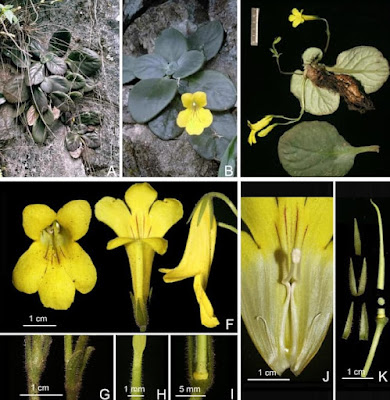 |
| Ptychodus Agassiz, 1834 in Vullo, Villalobos-Segura, Amadori, Kriwet, Frey, González, Gutiérrez, Ifrim, Stinnesbeck et Stinnesbeck, 2024. |
Abstract
The fossil fish Ptychodus Agassiz, 1834, characterized by a highly distinctive grinding dentition and an estimated gigantic body size (up to around 10 m), has remained one of the most enigmatic extinct elasmobranchs (i.e. sharks, skates and rays) for nearly two centuries. This widespread Cretaceous taxon is common in Albian to Campanian deposits from almost all continents. However, specimens mostly consist of isolated teeth or more or less complete dentitions, whereas cranial and post-cranial skeletal elements are very rare. Here we describe newly discovered material from the early Late Cretaceous of Mexico, including complete articulated specimens with preserved body outline, which reveals crucial information on the anatomy and systematic position of Ptychodus. Our phylogenetic and ecomorphological analyses indicate that ptychodontids were high-speed (tachypelagic) durophagous lamniforms (mackerel sharks), which occupied a specialized predatory niche previously unknown in fossil and extant elasmobranchs. Our results support the view that lamniforms were ecomorphologically highly diverse and represented the dominant group of sharks in Cretaceous marine ecosystems. Ptychodus may have fed predominantly on nektonic hard-shelled prey items such as ammonites and sea turtles rather than on benthic invertebrates, and its extinction during the Campanian, well before the end-Cretaceous crisis, might have been related to competition with emerging blunt-toothed globidensine and prognathodontine mosasaurs.
Keywords: Chondrichthyes, Lamniformes, Ptychodontidae, ecomorphology, Late Cretaceous, Vallecillo fossil Lagerstätte
Romain Vullo, Eduardo Villalobos-Segura, Manuel Amadori, Jürgen Kriwet, Eberhard Frey, Margarito A. González González, José M. Padilla Gutiérrez, Christina Ifrim, Eva S. Stinnesbeck and Wolfgang Stinnesbeck. 2024. Exceptionally preserved Shark Fossils from Mexico elucidate the Long-standing Enigma of the Cretaceous Elasmobranch Ptychodus. Proc. R. Soc. B. 291: 20240262. DOI: 10.1098/rspb.2024.0262












































